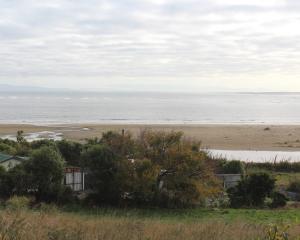
Environment Canterbury adopted the Greater Christchurch Spatial Plan and the Greater Christchurch Partnership Housing Action Plan at a council meeting on Wednesday.
The spatial plan calls for greater investment in public transport, including mass rapid transport to provide connections in Christchurch.
Chairperson Peter Scott said the spatial plan ‘‘is something Greater Christchurch deserves’’ and he pledged to keep lobbying central Government.
Councillor Grant Edge said the previous Government had given its backing to mass rapid transport, ‘‘and now we are waiting on the new Government’’.
Senior strategy manager Jesse Burgess said the spatial plan provided a blueprint for the next 30 years.
The population across the Christchurch city, and Waimakariri and Selwyn districts is expected to grow from 540,000 to more than 700,000 by 2051.
‘‘This spatial plan was developed with considerable public input,’’ Mr Burgess said.
More than 7000 people responded to an online survey last year ‘‘including a large number of young people’’, while 358 submissions were received on the draft spatial plan, he said.
The spatial plan proposes a shift from greenfield developments to higher density housing.
The growing population is expected to be more ethnically diverse, with people identifying as Māori, Pasifika and Asian forming a greater share of young people and the working-age population by 2051.
An ageing and more diverse population will require a range of housing types and models of community living, the plan says.

The spatial plan will provide guidance to District Plans and to Environment Canterbury’s Regional Policy Statement, which is expected to be consulted on later this year.
Mr Burgess said the housing plan was a response to the growing housing crisis, with rents in the Greater Christchurch area rising faster than ‘‘anywhere else in the country’’ over the last 12 months.
It identifies eight actions councils can do immediately, including looking at opening up Crown and council owned land for housing.
Other options include investigating the creation of ‘‘inclusionary zoning’’ to increase the supply of social and affordable rental housing, what kind of incentives can be offered, and advocating with banks.
Options like the Ōtautahi Community Housing Trust model can also be considered.
The Canterbury Mayoral Forum is also looking into housing affordability across the wider Canterbury region, Mr Burgess said.
The Christchurch and Waimakariri councils have already adopted both plans, while the Selwyn District Council was due to meeting on Wednesday afternoon.
The Greater Christchurch Partnership is a collaboration between the four councils, Te Rūnanga o Ngāi Tahu and government agencies.
Call for more transparent meetings
Canterbury regional councillors say they want open and transparent meetings, but are divided on how to achieve it.
A motion by councillor Greg Byrnes calling for Environment Canterbury’s briefings, workshops and seminars to be open to the public was lost by seven votes to nine at Wednesday's council meeting.
But councillors agreed on the need to be more transparent.
Cr Byrnes said his motion was in line with recommendations from Ombudsman Peter Boshier in a report released in October last year.
‘‘The principle of open by default should be the starting point and then you can consider whether it needs to be closed and why.
‘‘If you can’t have the courage to say what you think in front of your constituents then it is a pretty sad state of affairs.’’
He noted meetings were not livestreamed to the public and recordings were not released until five days after a meeting.
The Christchurch City Council recently adopted a similar motion.
Ngāi Tahu councillors Tutehounuku Korako and Iaean Cranwell said they supported the intent of the motion, but voted against it because Te Rōpū Tuia (a committee comprising Papatipu Rūnanga chairs and councillors) had not been consulted.
Several councillors expressed concern that having staff briefings to councillors open to the public could prevent ‘‘free and frank discussion’’ and hamper the ‘‘flow of information’’.
North Canterbury councillor Claire McKay questioned the need for the motion.
‘‘What do you not trust about our council processes?’’ she asked.
But fellow North Canterbury councillor Grant Edge said the Ombudsman addressed the concerns raised by councillors in the report.
‘‘The report makes clear that councillors are required to conduct business in an open and accountable manner.
‘‘The Ombudsman acknowledges there are times when meetings will need to be closed, but they need to be open by default, which this motion proposes.’’
Councillor Genevieve Robinson said the motion was not proposing a major change to processes.
‘‘Coming from a journalism background, you need the information so you can ask the right questions and talk to the right people so you can write your story.’’
Chairperson Peter Scott said there was support for the intent of the motion and encouraged Cr Byrnes to come back with a motion ‘‘which works for everybody’’.
By David Hill, Local Democracy Reporter
■ LDR is local body journalism co-funded by RNZ and NZ On Air












